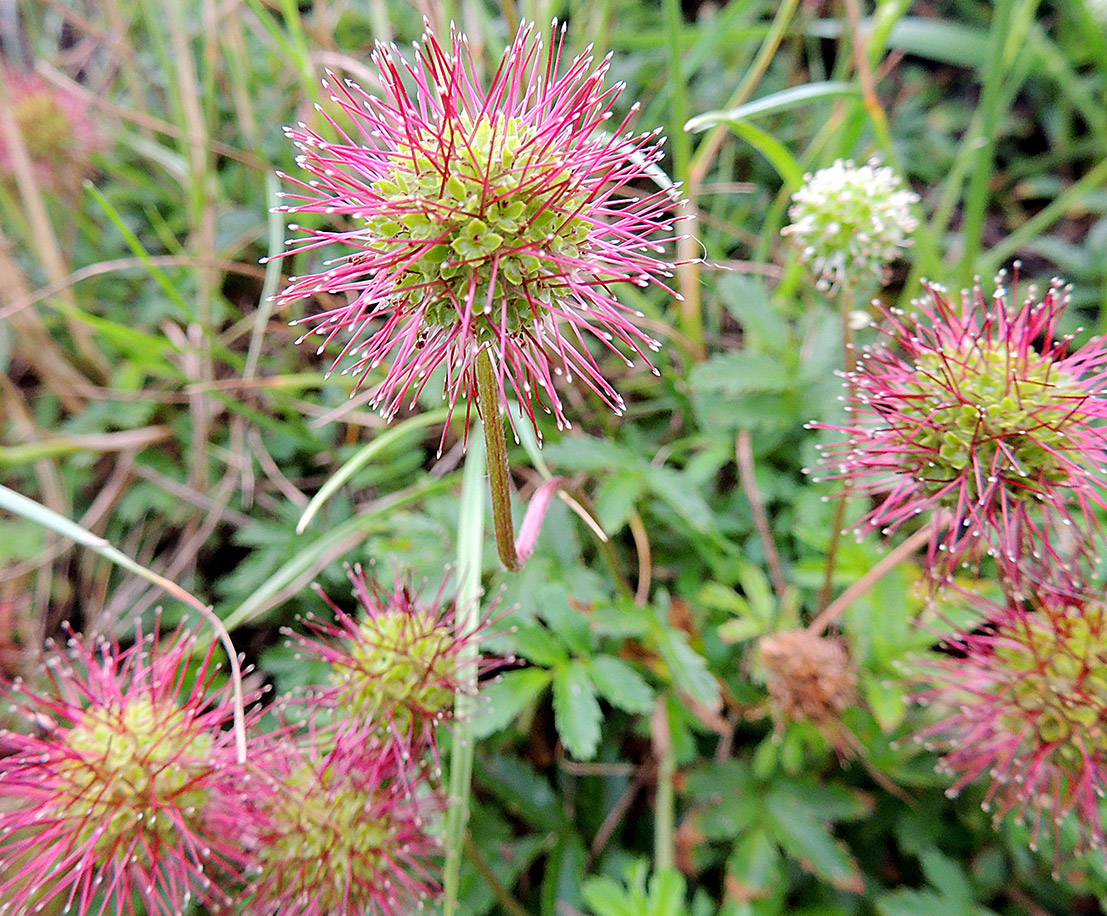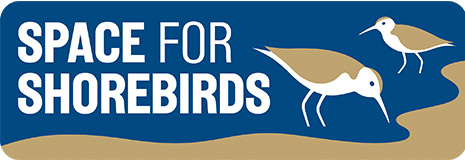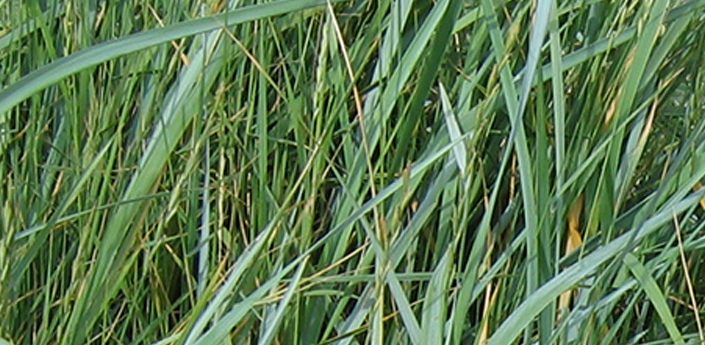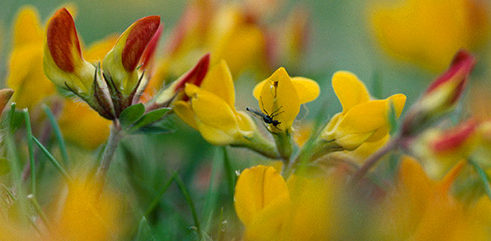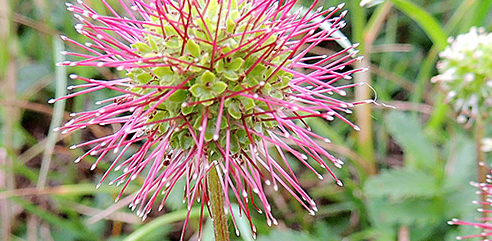Dune Grasslands
The beautiful dunes of the Northumberland coast are an amazing spectacle at any time of the year. Though the full colour of the dunes is best appreciated during the summer months when the wildflowers are in bloom. Many of the dune systems in the county are of national and global importance.
The dunes also support a huge diversity of insects including some real beauties, like the 6 spot burnet moth and dark green fritillary butterfly, as well as bumble bees, hoverflies, beetles and a myriad of other insects.
The dunes include a range of different habitats from early dune systems to more mature fixed dunes, the damp dune slacks (hollows in between dunes) and areas of willow scrub which then develop on the most mature areas.
The Special Plants of the Dunes
These are just some of the most iconic plants that you might be lucky enough to encounter. These plants are special because they live in a dry, hostile and sometimes shifting environment and many depend on calcareous soils, which derive their calcium from the shells of marine molluscs, like limpets, welks and periwinkles.
Shifting Dunes
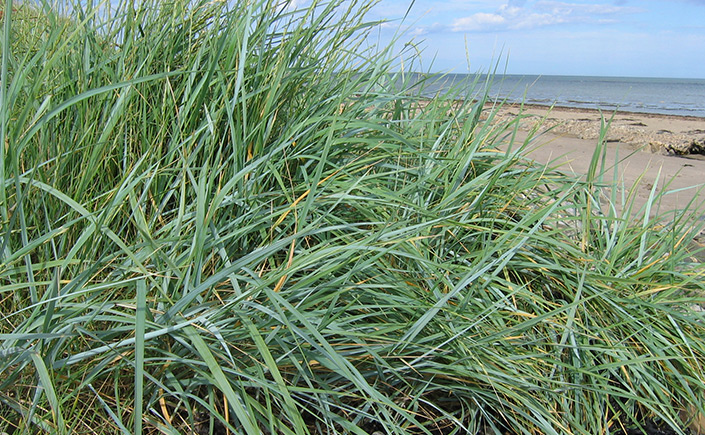
Lyme-grass has a particularly important role in the initial fixing of the dunes, which then allows the more widespread marram grass to get a hold. Lyme-grass has lovely blue-grey wide (wide for a grass) leaf blades. It fixes the dunes with its shoots which run under the sand.
Photo by Gavin Duthie
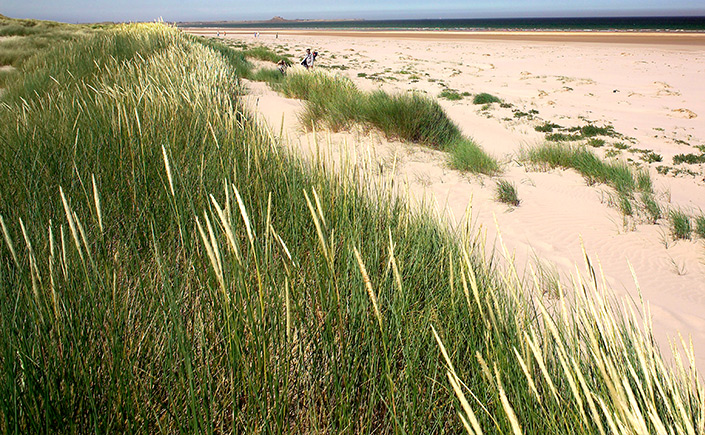
Marram grass is a dense tough grass which is the main dune fixing plant in Northumberland. It also fixes the dunes with its shoots which creep underground. It has very sharp pointy tips.
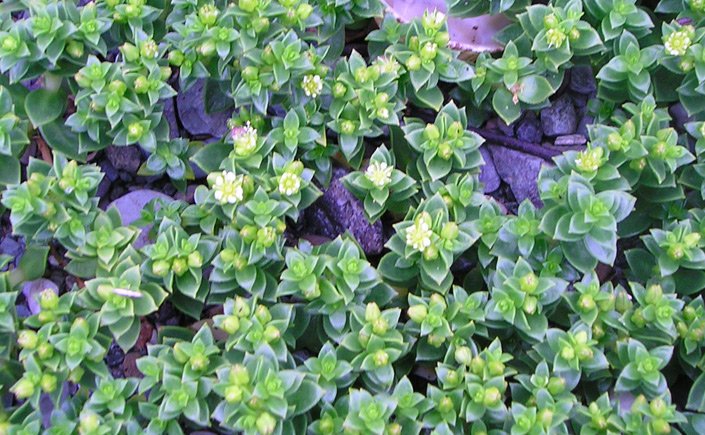
Sea Sandwort is one of the plants to first colonise the strandline. This hardy plant has fleshy leaves to cope with the lack of fresh water, which are arranged in a cross shape. It is also low growing in order to avoid the worst of the exposure from the wind. The small white flowers can be seen between May and August.
Fixed Dunes
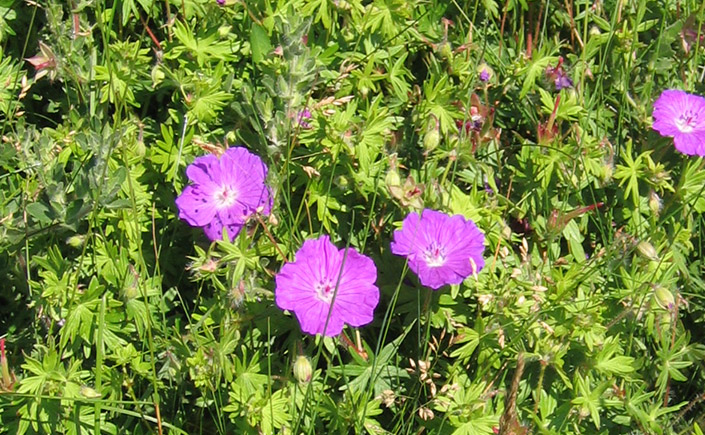
Bloody Crane’s-bill is a stunning bushy geranium found along the length of the coastline; the colour deep pink of the flower usually gives it away though also look out for the starry leaves. The bloody cranesbill is the county flower of Northumberland.
Photo by Richard Willis
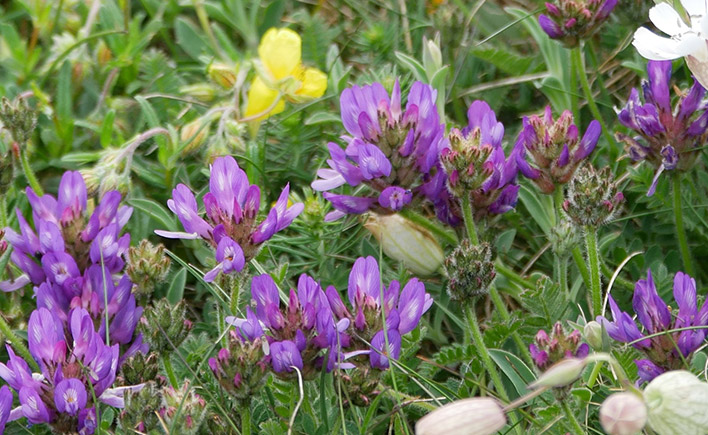
Purple Milk-vetch is a low growing plant, with blue-purple flowers which are about 2cm wide. Seeing this plant is a privilege not only because of it’s beauty because it has declined significantly and is listed as a priority species.
Photo by Iain Robson
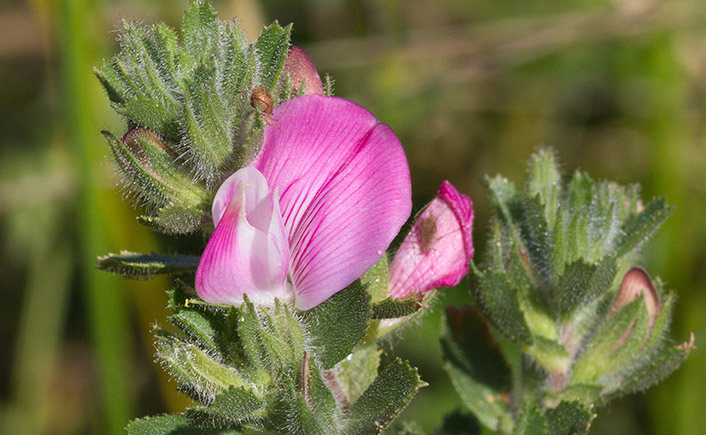
Common restharrow grows up to about 60cm, it has clusters of lovely pale pink flowers during the summer.
Photo by Laurie Campbell
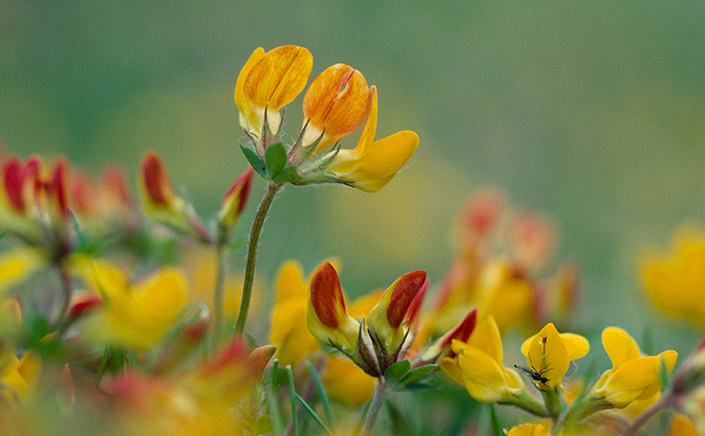
Bird’s-foot-trefoil is very low-growing and has yellow flowers, with an orange tint which can be found in bloom during late spring to early autumn. It is found in lots of places but in the dunes as elsewhere it is a very important food plant for caterpillars such as common blue and dingy skipper butterflies as well as providing nectar to a range of adult butterfly species.
Photo by Laurie Campbell
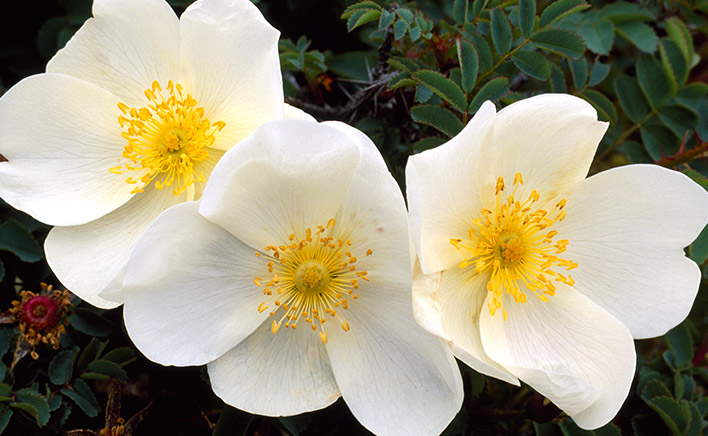
Burnet rose is a plant you can’t miss. It grows in dense patches and it’s white flower is in bloom for much of the summer on more mature areas of fixed sand dune.
Photo by David Feige
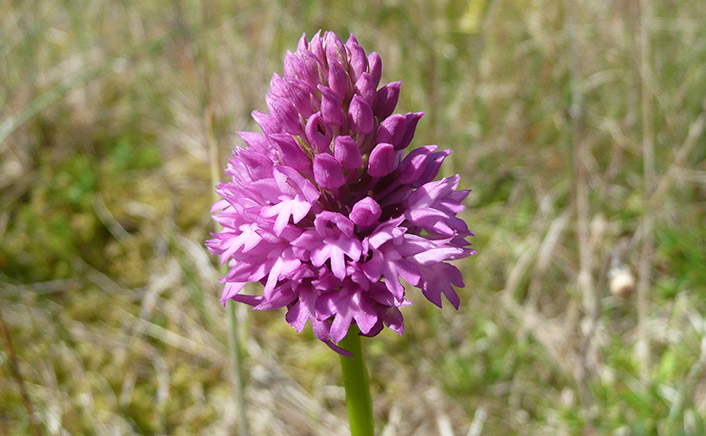
Orchids! The Northumberland coast has a wealth of orchids which are found on the mature dunes and dune slacks. These include fragrant orchid, pyramidal orchid, common twayblade, marsh helleborine, northern marsh orchid and coralroot orchid. The Lindisfarne helleborine is found on Holy Island only and nowhere else in the world.
Dune Slacks (Hollows)
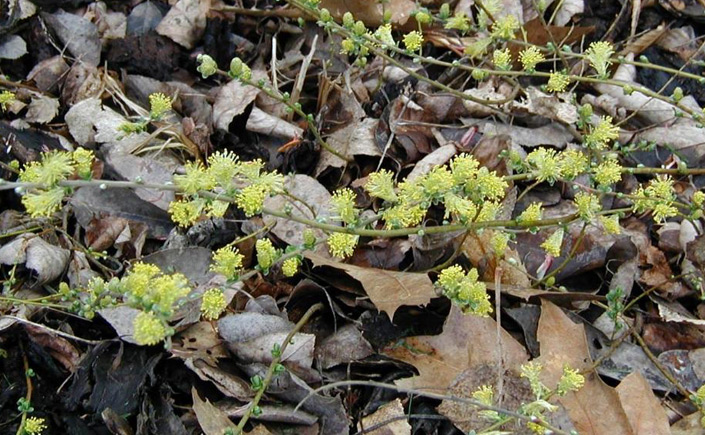
Creeping willow is a low shrub, with oval leaves. It flowers in April and May spring with yellow green catkins. It is found on damp areas on mature dunes and slacks (dune hollows).
Photo by Natalie J Hunt
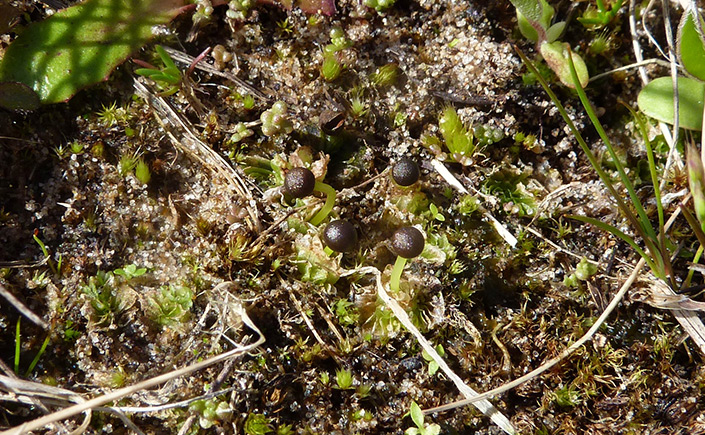
Petalwort sounds like a wildflower, but it’s a liverwort, which is part of the group of primitive plants to which mosses belong. This small pale green plant can be found in the damp dune hollows on Holy Island and near Bamburgh. It is a very rare and precious plant which is only present at 10 sites in the whole of the UK.
Photo by Richard Willis
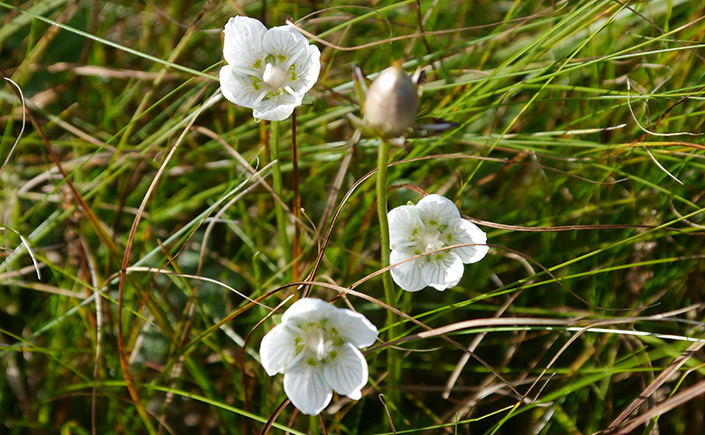
Grass of parnassus isn’t actually a grass; it is a stunning little white wildflower which grows in the damp dune slacks. These beauties are in flower from July to September.
Pirri Pirri Bur
Our dunes are however under threat from an invasive plant called pirri-pirri. Their seeds easily attach to clothes, shoe laces and particularly onto dogs. This plant takes over large areas of the dunes, taking away space from our native wildflowers. The Space for Shorebirds Wildlife Rangers have a special responsibility to tackle the threat of pirri-pirri on the Northumberland coast. This is a big challenge that will require a county wide approach as the plant is also present in a number of beauty spots away from the coast. There are a few simple measures you can take to help the dunes and to prevent you or your dog getting tangled up with pirri-pirri burs. 1. If you stay on the main paths there is less risk of you picking up the seeds and spreading them to the rest of the dunes, other beauty spots or your garden! 2. Check your clothes and your dog after walking through the dunes for pirri-pirri burs. Take care to prise them from your clothing and your dog and put them into a rubbish bin. If you visit Lindisfarne this is really important as it has colonised large areas of sand dunes, so please refer to on-site signage when visiting.
Spotted pirri pirri bur? Please click here to report to the Wildlife Ranger.
Photo by Raine Bryant
